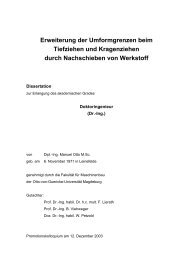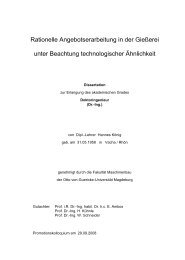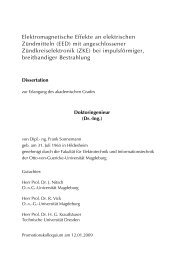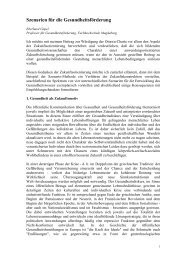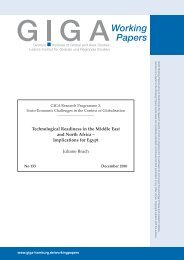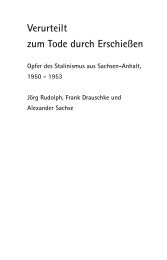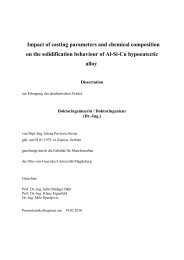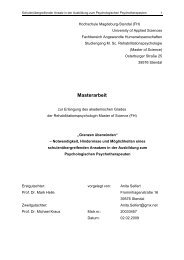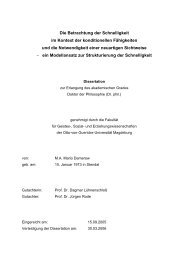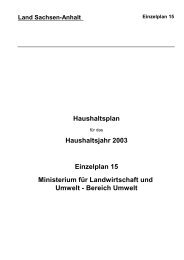Chapter 1
Chapter 1
Chapter 1
Create successful ePaper yourself
Turn your PDF publications into a flip-book with our unique Google optimized e-Paper software.
costly process of adjustment, the average GDP growth rate of human capital (progress that in fact was initiated before<br />
for the whole 1987-94 period may understate the benefits the adjustment program of 1986), financial deepening,<br />
of reform. If this is the case, the average GDP growth rate abatement of price distortions, decrease of nonproductive<br />
during 1990-94 may better reflect the impact of the reform public expenditures, and higher openness to intemational<br />
measures. Table 4.4 presents the actual growth rates for the competition and trade, all contributed significantly to the<br />
reform periods 1987-94 and 1990-94, as well as that for the increase of the per capita GDP growth rate. Had the averprereform<br />
period 1981-86. age investment-to-GDP ratio remained the same in the sec-<br />
Most importantly, table 4.4 reports the contribution of ond period, the growth rate would have increased by 1.97<br />
the relevant proxy variables to the improvement in the per percentage points. This increase implies an improvement in<br />
capita GDP growth rate. The increase in the growth rate the efficiency of capital investment. However, the average<br />
predicted by the change in the proxy variables (1.19 per- ratio of gross domestic investment to GDP was 5.22 percentage<br />
points) is quite close to the actual increase (1.29 if centage points lower in the period 1987-94 than in<br />
the improvement is measured with respect to 1987-94, or 1981-86. According to the estimates presented in table 4.3,<br />
1.58 if with respect to 1990-94.) Advancement in the level this large fall may in principle cause a decline in the per<br />
capita GDP growth rate anywhere from 0.52 to 1.04 per-<br />
TAKLE 4.4 centage points. Given that in Tunisia most of the reduction<br />
Determinants of growth improvement in Tunisia in domestic investment was related to public enterprises<br />
Contribution to the with low productivity, a growth-rate reduction of 0.78 per-<br />
Variable<br />
Average<br />
1981-86<br />
Average<br />
1987-94<br />
improvement in the<br />
per capita GDP<br />
growth rate (percent),<br />
centage points (the midpoint estimate presented in table<br />
4.4) may overstate the adverse effect of the investment/GDP<br />
decline in the latter period. This partialy<br />
Investment/GDpb 29.30 24.08 -0.78metG Pdcieith laerpio.Tsprily<br />
pet2ent percent explains why the predicted growth-rate improvement in<br />
Secondary education'<br />
Govemment spending<br />
on education/GDP<br />
0.52 years<br />
5.56<br />
percent<br />
0.73 years<br />
5.84<br />
percent<br />
0.21<br />
0.06<br />
table 4.4 falls short of the actual improvement and represents<br />
for economic policy.<br />
targets<br />
Life expectancy at birth 63.61 years 66.36 years 0.34<br />
M2/GDP 43.86 48.57 0.14 Key macroeconomic indicators:<br />
Black market exchange<br />
percent<br />
10.60<br />
percent<br />
1.80 0.35 Medium-term outlook<br />
rate (premium over<br />
official rate)<br />
percent percent<br />
Table 4.5 presents medium-term projections for key macro-<br />
Government consumption<br />
(net of education<br />
spending)/GDP<br />
Average tariff rated<br />
10.87<br />
percent<br />
40.00<br />
10.49<br />
percent<br />
33.00<br />
0.05<br />
0.14<br />
economic indicators under two altemative scenarios,<br />
namely, moderate and hh growth. The two scenarios presume<br />
a continuation of both macroeconomic stability and<br />
Exports/GDP<br />
percent<br />
24.63<br />
percent<br />
36.00 0.68 structural reforms. The moderate-growth scenario reprepercent<br />
percent sents, to a large extent, an economy similar to that of the last<br />
Growth rate of per capita GDP' eight years. The high-growth scenario, on the other hand,<br />
1981-86<br />
1987-94<br />
1.15 percent<br />
2.44 percent<br />
assumes an acceleration of the pace of reform implementa-<br />
1990-94 2.73 percent tion and represents targets for economic policy.<br />
Acual growth Improvment<br />
In 1987-94 with respect to 1981-86 1.29 percentage points<br />
At the sectoral level, the main sources of growth under<br />
both scenarios are the manufacturing and service sectors.<br />
In 1990-94 with respect to 1981-86 1.58 percentage points In the high-growth scenario the manufacturing sector<br />
Predicted growth Improvement 1. 1 9 percentage points grows at an average of 8.5 percent per year. The service<br />
a. The estimated effects on growth gien as a range d vaiues in table 4.3 are used as the<br />
midpoint for this table's calations.<br />
sector, especialy financial services, transport, and<br />
b. Exduding the Gazoduc and Misbr projects. telecommunication will have to satisfy the demand stemc.<br />
The figures correspond to the years 1980 and 1985, respeciely.<br />
d. The fi as correspond to the years 1986 and 1993, respectively. ming from this higher level of economic activity<br />
e. Expo of nonpetroleum. nonphosphate products. more than 6 percent per year. In the moderate-growth scef<br />
Average growth rates are alcued using the laant-squan method<br />
e<br />
Source: Uold Bank calcuatiorn. nario, manufacturing value added grows in line with past<br />
growing<br />
48 TUNISIAS GLOBAL INTEGRATON AND SUSTAINABLE DEvELOPMENT STRATEGIC CHOICES FOR THE 21ST CENTURY




